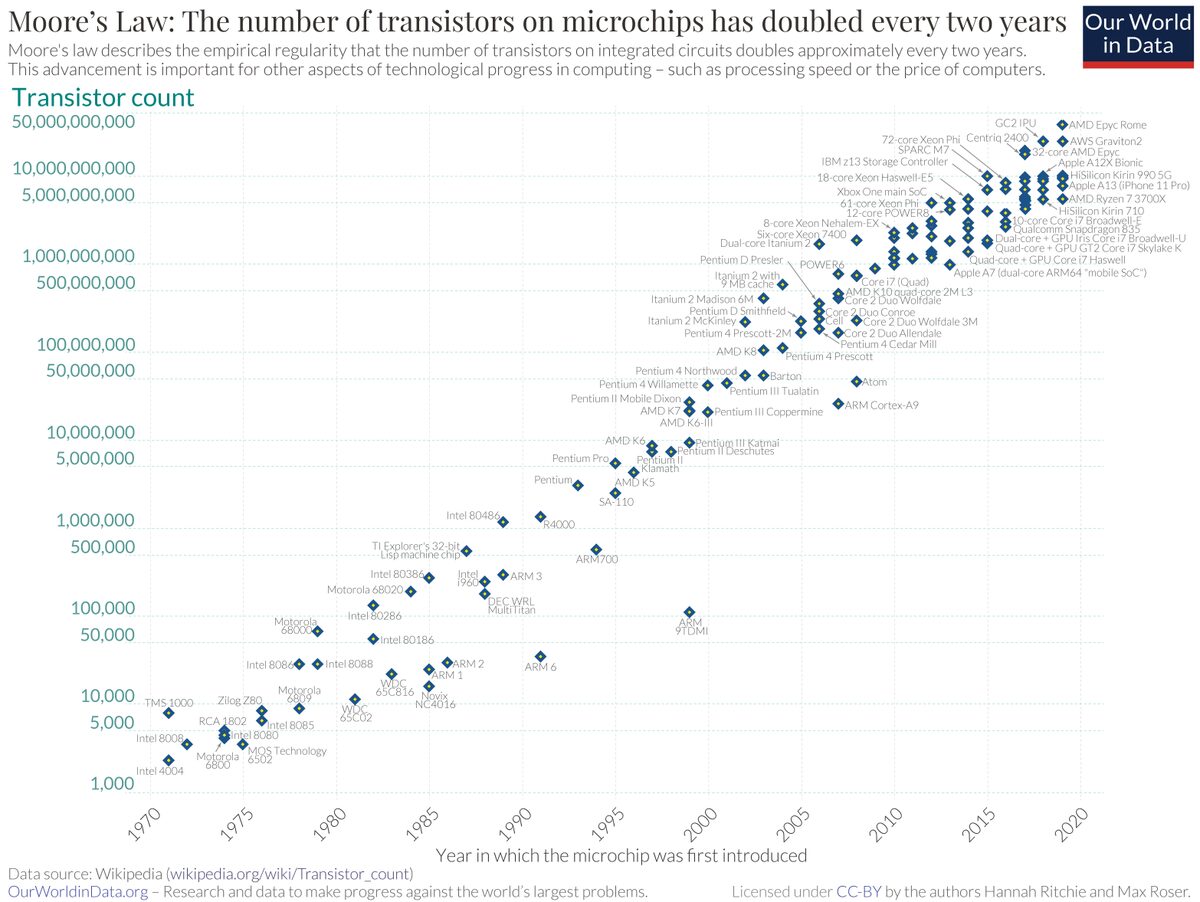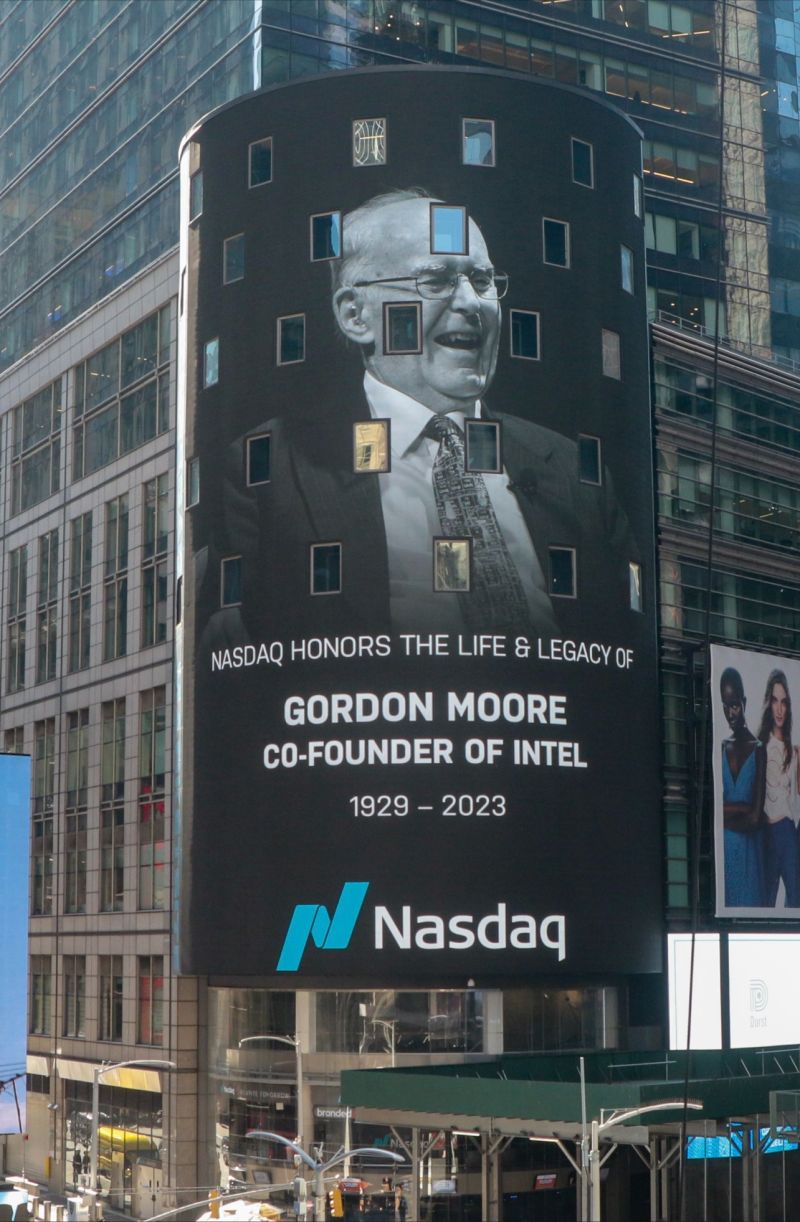Moore’s Law Exponentially Changed the Course of Electronic Design
Connector Supplier marks the passing of one of the electronics industry’s great innovators. Gordon Moore’s foundational theory drove exponential advancements in semiconductor and circuit design, and charted the course for the miniaturization of connectors and other electronic components.

Three years before Gordon Moore co-founded Intel Corporation in 1968, he plotted out a prediction for the evolution of computer chips on a piece of graph paper: The capacity and complexity of integrated circuits would double every year, he said, with the number of transistors on a semiconductor chip doubling, along with speed and performance — even as chips would become smaller. His theories are described in the groundbreaking 1965 paper, Cramming More Components Into Integrated Circuits.
Moore’s theory, known today as Moore’s Law, became one of the guiding principles of electronic design. “By making things smaller, everything gets better at the same time. The transistors get faster, the reliability goes up, the cost goes down,” he said. Moore died at age 94 on March 24, 2023.

While Moore’s Law centers on microprocessors, it has had profound implications for every component in a circuit, including interconnects. As microchips became smaller and more powerful, the demand for high-speed, high-bandwidth connectors also increased, leading to today’s high-speed micro and nano-sized components and the tremendous computing products of today.
“From the introduction of the first planar transistor in 1959, the complexity of a chip had about doubled every year, and it was getting up to about 60 when I looked at it in 1965. I wanted to predict that this was going to be the way to make electronics inexpensively, which was not generally acknowledged at that time. So, I took this doubling every year and extrapolated it 10 years, from 1965 to 1975, from 60 components to 60,000 components on a chip — a pretty wild extrapolation. It turned out to be ridiculously accurate,” he said. “Rather than just being something that chronicles the progress of the industry, it became something that drove the progress of the industry. A tremendous amount of engineering and commitment has been required to make that happen, but much to my surprise, the industry has been able to keep up with the projection.”
The semiconductor industry has indeed kept up, along with the development of interconnects and every component on the board. Moore’s work profoundly impacted the entire field of electronic design. His vision underpinned the development of today’s world-changing technological breakthroughs. The increasing performance of microchips has led to the development of connector technologies that can accommodate higher speeds, higher bandwidths, shrinking form factors, and lower price points.
“In 1971, when Intel released its first microprocessor, Avnet was the first distributor to place a product order for the 4004 model. This initiated a significant and lasting relationship between Avnet and Intel, one that continues to this day. A relationship established on the idea of making new and innovative technology accessible to people around the world,” Avnet announced on LinkedIn. “We’re proud to have worked alongside a partner like Gordon Moore and to honor his legacy of innovation. Our thoughts are with the Moore family and our partners across the Intel community.”

Moore received his bachelor’s degree in chemistry from the University of California, Berkeley in 1950, and his Ph.D. in chemistry and physics from the California Institute of Technology in 1954. He began his career in electronics at Shockley Semiconductor Laboratory, followed by Fairchild Semiconductor, before co-founding with Robert Noyce the Intel Corporation, where he became CEO and helped guide the computer revolution and the rise of Silicon Valley in the 1970s and 1980s. Moore was honored with the National Medal of Technology and the Presidential Medal of Freedom. In 2000, he founded the Gordon and Betty Moore Foundation to advance scientific discovery, environmental conservation, patient care, and the preservation of the Bay Area.
Moore revised Moore’s Law to accommodate these changes in 1975, slowing the rate of progress from every year to every two years. Since about 2010, the pace of semiconductor advancement has slowed slightly below what was predicted by Moore, but it has not stopped. The impact of his work will be eternal.
Read Bob Hult’s 2016 article on Moore’s Law’s 50th anniversary.
Subscribe to our weekly e-newsletters, follow us on LinkedIn, Twitter, and Facebook, and check out our eBook archives for more applicable, expert-informed connectivity content.
- Where in the World is Amphenol LTW’s Luc Kan? - April 23, 2024
- TE Connectivity’s Sustainability Efforts Pay Off - April 23, 2024
- What is a VGA Connector? - April 23, 2024



